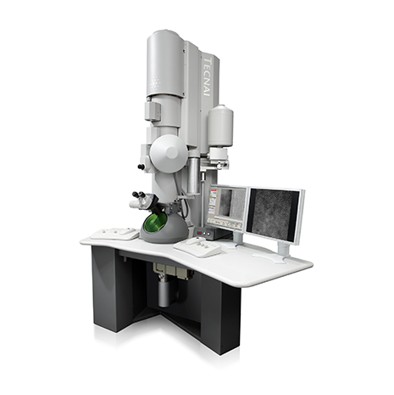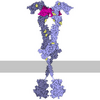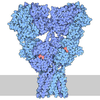[English] 日本語
 Yorodumi
Yorodumi- PDB-4ux8: RET recognition of GDNF-GFRalpha1 ligand by a composite binding s... -
+ Open data
Open data
- Basic information
Basic information
| Entry | Database: PDB / ID: 4ux8 | |||||||||
|---|---|---|---|---|---|---|---|---|---|---|
| Title | RET recognition of GDNF-GFRalpha1 ligand by a composite binding site promotes membrane-proximal self-association | |||||||||
 Components Components |
| |||||||||
 Keywords Keywords | SIGNALING PROTEIN / VERTEBRATE DEVELOPMENT / HUMAN DISEASES / PART OF THE RET-GFL- GFRA COMPLEX | |||||||||
| Function / homology |  Function and homology information Function and homology informationchemoattractant activity involved in axon guidance / mesenchymal to epithelial transition involved in metanephros morphogenesis / dorsal spinal cord development / positive regulation of mesenchymal to epithelial transition involved in metanephros morphogenesis / ureteric bud formation / positive regulation of ureteric bud formation / regulation of semaphorin-plexin signaling pathway / postganglionic parasympathetic fiber development / glial cell-derived neurotrophic factor receptor activity / glial cell-derived neurotrophic factor receptor binding ...chemoattractant activity involved in axon guidance / mesenchymal to epithelial transition involved in metanephros morphogenesis / dorsal spinal cord development / positive regulation of mesenchymal to epithelial transition involved in metanephros morphogenesis / ureteric bud formation / positive regulation of ureteric bud formation / regulation of semaphorin-plexin signaling pathway / postganglionic parasympathetic fiber development / glial cell-derived neurotrophic factor receptor activity / glial cell-derived neurotrophic factor receptor binding / RET signaling / postsynaptic membrane organization / Peyer's patch morphogenesis / GDF15-GFRAL signaling pathway / positive regulation of metanephric glomerulus development / embryonic epithelial tube formation / ureter maturation / glial cell-derived neurotrophic factor receptor signaling pathway / lymphocyte migration into lymphoid organs / posterior midgut development / regulation of morphogenesis of a branching structure / neurotrophin receptor activity / regulation of dopamine uptake involved in synaptic transmission / Formation of the ureteric bud / membrane protein proteolysis / Formation of the nephric duct / peristalsis / enteric nervous system development / neuron cell-cell adhesion / positive regulation of dopamine secretion / sympathetic nervous system development / positive regulation of branching involved in ureteric bud morphogenesis / organ induction / peripheral nervous system development / plasma membrane protein complex / commissural neuron axon guidance / metanephros development / NCAM1 interactions / neuron maturation / regulation of stem cell differentiation / positive regulation of extrinsic apoptotic signaling pathway in absence of ligand / mRNA stabilization / positive regulation of cell adhesion mediated by integrin / RAF/MAP kinase cascade / neural crest cell migration / ureteric bud development / positive regulation of peptidyl-tyrosine phosphorylation / regulation of axonogenesis / branching involved in ureteric bud morphogenesis / response to pain / homophilic cell-cell adhesion / RET signaling / positive regulation of cell size / embryonic organ development / negative regulation of extrinsic apoptotic signaling pathway in absence of ligand / regulation of cell adhesion / side of membrane / cellular response to retinoic acid / NPAS4 regulates expression of target genes / multivesicular body / transmembrane receptor protein tyrosine kinase activity / axon guidance / cell surface receptor protein tyrosine kinase signaling pathway / adult locomotory behavior / positive regulation of cell differentiation / growth factor activity / kidney development / positive regulation of neuron projection development / receptor protein-tyrosine kinase / receptor tyrosine kinase binding / male gonad development / integrin binding / neuron differentiation / neuron projection development / cell migration / nervous system development / MAPK cascade / signaling receptor activity / regulation of gene expression / RAF/MAP kinase cascade / protein tyrosine kinase activity / negative regulation of neuron apoptotic process / positive regulation of phosphatidylinositol 3-kinase/protein kinase B signal transduction / receptor complex / positive regulation of MAPK cascade / endosome membrane / positive regulation of cell migration / signaling receptor binding / axon / external side of plasma membrane / neuronal cell body / positive regulation of cell population proliferation / calcium ion binding / positive regulation of gene expression / negative regulation of apoptotic process / positive regulation of DNA-templated transcription / Golgi apparatus / signal transduction / protein homodimerization activity / positive regulation of transcription by RNA polymerase II Similarity search - Function | |||||||||
| Biological species |  HOMO SAPIENS (human) HOMO SAPIENS (human) | |||||||||
| Method | ELECTRON MICROSCOPY / single particle reconstruction / negative staining / Resolution: 24 Å | |||||||||
 Authors Authors | Goodman, K. / Kjaer, S. / Beuron, F. / Knowles, P. / Nawrotek, A. / Burns, E. / Purkiss, A. / George, R. / Santoro, M. / Morris, E.P. / McDonald, N.Q. | |||||||||
 Citation Citation |  Journal: Cell Rep / Year: 2014 Journal: Cell Rep / Year: 2014Title: RET recognition of GDNF-GFRα1 ligand by a composite binding site promotes membrane-proximal self-association. Authors: Kerry M Goodman / Svend Kjær / Fabienne Beuron / Phillip P Knowles / Agata Nawrotek / Emily M Burns / Andrew G Purkiss / Roger George / Massimo Santoro / Edward P Morris / Neil Q McDonald /   Abstract: The RET receptor tyrosine kinase is essential to vertebrate development and implicated in multiple human diseases. RET binds a cell surface bipartite ligand comprising a GDNF family ligand and a ...The RET receptor tyrosine kinase is essential to vertebrate development and implicated in multiple human diseases. RET binds a cell surface bipartite ligand comprising a GDNF family ligand and a GFRα coreceptor, resulting in RET transmembrane signaling. We present a hybrid structural model, derived from electron microscopy (EM) and low-angle X-ray scattering (SAXS) data, of the RET extracellular domain (RET(ECD)), GDNF, and GFRα1 ternary complex, defining the basis for ligand recognition. RET(ECD) envelopes the dimeric ligand complex through a composite binding site comprising four discrete contact sites. The GFRα1-mediated contacts are crucial, particularly close to the invariant RET calcium-binding site, whereas few direct contacts are made by GDNF, explaining how distinct ligand/coreceptor pairs are accommodated. The RET(ECD) cysteine-rich domain (CRD) contacts both ligand components and makes homotypic membrane-proximal interactions occluding three different antibody epitopes. Coupling of these CRD-mediated interactions suggests models for ligand-induced RET activation and ligand-independent oncogenic deregulation. | |||||||||
| History |
|
- Structure visualization
Structure visualization
| Movie |
 Movie viewer Movie viewer |
|---|---|
| Structure viewer | Molecule:  Molmil Molmil Jmol/JSmol Jmol/JSmol |
- Downloads & links
Downloads & links
- Download
Download
| PDBx/mmCIF format |  4ux8.cif.gz 4ux8.cif.gz | 339.9 KB | Display |  PDBx/mmCIF format PDBx/mmCIF format |
|---|---|---|---|---|
| PDB format |  pdb4ux8.ent.gz pdb4ux8.ent.gz | 258.6 KB | Display |  PDB format PDB format |
| PDBx/mmJSON format |  4ux8.json.gz 4ux8.json.gz | Tree view |  PDBx/mmJSON format PDBx/mmJSON format | |
| Others |  Other downloads Other downloads |
-Validation report
| Arichive directory |  https://data.pdbj.org/pub/pdb/validation_reports/ux/4ux8 https://data.pdbj.org/pub/pdb/validation_reports/ux/4ux8 ftp://data.pdbj.org/pub/pdb/validation_reports/ux/4ux8 ftp://data.pdbj.org/pub/pdb/validation_reports/ux/4ux8 | HTTPS FTP |
|---|
-Related structure data
| Related structure data |  2712MC  2713C M: map data used to model this data C: citing same article ( |
|---|---|
| Similar structure data |
- Links
Links
- Assembly
Assembly
| Deposited unit | 
|
|---|---|
| 1 |
|
- Components
Components
| #1: Protein | Mass: 67922.539 Da / Num. of mol.: 2 / Fragment: RET EXTRACELLULAR DOMAIN, RESIDUES 29-635 / Mutation: YES Source method: isolated from a genetically manipulated source Source: (gene. exp.)  HOMO SAPIENS (human) / Cell line (production host): CHO LEC8 / Production host: HOMO SAPIENS (human) / Cell line (production host): CHO LEC8 / Production host:  References: UniProt: P07949, receptor protein-tyrosine kinase #2: Protein | Mass: 51091.277 Da / Num. of mol.: 2 Source method: isolated from a genetically manipulated source Source: (gene. exp.)   #3: Protein | Mass: 15096.242 Da / Num. of mol.: 2 / Fragment: MATURE, UNP RESIDUES 78-211 Source method: isolated from a genetically manipulated source Source: (gene. exp.)  HOMO SAPIENS (human) / Production host: HOMO SAPIENS (human) / Production host:  #4: Polysaccharide | Source method: isolated from a genetically manipulated source #5: Chemical | ChemComp-CA / Has protein modification | Y | Sequence details | RESIDUES 509 TO 635 ARE NOT IN THE MODEL | |
|---|
-Experimental details
-Experiment
| Experiment | Method: ELECTRON MICROSCOPY |
|---|---|
| EM experiment | Aggregation state: PARTICLE / 3D reconstruction method: single particle reconstruction |
- Sample preparation
Sample preparation
| Component | Name: Reconstituted mammalian RETecd-GDNF-GFRa1 ternary complex Type: COMPLEX |
|---|---|
| Buffer solution | pH: 8 |
| Specimen | Embedding applied: NO / Shadowing applied: NO / Staining applied: YES / Vitrification applied: NO |
| EM staining | Type: NEGATIVE / Material: uranyl acetate |
- Electron microscopy imaging
Electron microscopy imaging
| Experimental equipment |  Model: Tecnai F20 / Image courtesy: FEI Company |
|---|---|
| Microscopy | Model: FEI TECNAI F20 / Date: Nov 8, 2012 |
| Electron gun | Electron source:  FIELD EMISSION GUN / Accelerating voltage: 200 kV / Illumination mode: FLOOD BEAM FIELD EMISSION GUN / Accelerating voltage: 200 kV / Illumination mode: FLOOD BEAM |
| Electron lens | Mode: OTHER / Nominal magnification: 80000 X / Nominal defocus min: 900 nm |
| Image recording | Electron dose: 100 e/Å2 / Film or detector model: TVIPS TEMCAM-F415 (4k x 4k) |
| Image scans | Num. digital images: 1200 |
| Radiation wavelength | Relative weight: 1 |
- Processing
Processing
| EM software |
| ||||||||||||
|---|---|---|---|---|---|---|---|---|---|---|---|---|---|
| Symmetry | Point symmetry: C2 (2 fold cyclic) | ||||||||||||
| 3D reconstruction | Method: ANGULAR RECONSTITUTION / Resolution: 24 Å / Num. of particles: 8519 Details: SUBMISSION BASED ON EXPERIMENTAL DATA FROM EMDB EMD-2712. (DEPOSITION ID: 12696). Symmetry type: POINT | ||||||||||||
| Refinement | Highest resolution: 24 Å | ||||||||||||
| Refinement step | Cycle: LAST / Highest resolution: 24 Å
|
 Movie
Movie Controller
Controller








 PDBj
PDBj












